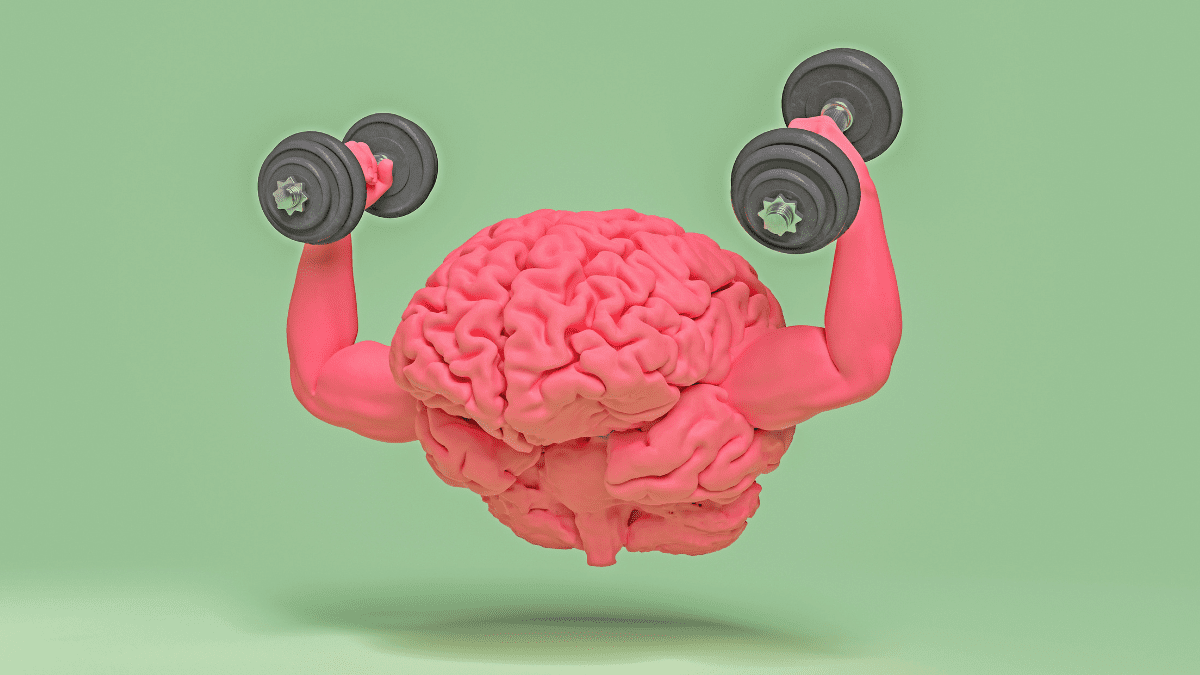10 Mindfulness Practices to Enhance Your Life
Transform your daily routine with these 10 simple mindfulness practices. Reduce stress, improve focus, and cultivate inner peace by staying present in everyday moments. Start your mindful journey today!

In today’s fast-paced world, practicing mindfulness can feel like a challenge. However, incorporating simple mindfulness practices into your daily life can help you stay present, reduce stress, and improve overall well-being. The good news? You don’t need hours of meditation—just small mindful shifts throughout your day can make a big difference.
Mindfulness is the practice of being fully present in the moment, aware of your thoughts, feelings, and surroundings without judgment. Studies show that regular mindfulness practices can reduce stress, improve focus, and even enhance overall well-being. The best part? You don’t need hours of meditation or a retreat to experience its benefits—just a few mindful habits woven into your day can make a profound difference.
In this guide, we’ll explore 10 simple mindfulness practices that you can start using today. Whether you’re looking to feel more grounded, improve your relationships, or simply enjoy life more fully, these techniques will help you cultivate presence and peace in the midst of your everyday activities.
Let’s dive in!
1. Start Your Day with Intentions
The way you begin your morning sets the tone for the rest of your day. Instead of rushing into tasks or reaching for your phone first thing, take a moment to set an intention for the day ahead.
Why It Works
Setting an intention helps you bring focus and purpose into your actions. It shifts your mindset from reactive to proactive, allowing you to navigate challenges with greater awareness and clarity. Research suggests that practicing mindfulness in the morning can improve emotional regulation, productivity, and overall well-being.
How to Practice Mindfulness Practices
- Take a few deep breaths before getting out of bed.
- Ask yourself: “What kind of energy do I want to bring into today?”
- Use a simple affirmation like:
- “Today, I choose patience and kindness.”
- “I will focus on progress, not perfection.”
- “I am grounded, present, and open to new opportunities.”
- Write it down in a journal or repeat it in front of a mirror.
- Throughout the day, check in and realign with your intention whenever you feel overwhelmed.
Enhance Your Practice
To deepen this habit, consider using a guided affirmation journal or a mindfulness app that provides daily prompts. These tools can help reinforce positive thinking and keep you aligned with your intentions.
By starting your morning with mindful intention, you’ll cultivate a sense of control and awareness that can positively shape the rest of your day.
2. Practice Mindful Breathing
Breathing is something we do every moment of our lives, yet we rarely pay attention to it. Mindful breathing is one of the simplest and most effective ways to bring awareness into the present moment. It helps calm the nervous system, reduce stress, and improve focus—making it a powerful tool for daily mindfulness.
Why It Works
When we’re stressed, our breath becomes shallow and rapid, signaling the body to stay in “fight or flight” mode. Conscious breathing, on the other hand, activates the parasympathetic nervous system, helping the body shift into a state of relaxation and balance. Studies show that controlled breathing can lower cortisol levels, improve heart rate variability, and enhance overall well-being.
How to Practice Mindful Breathing
Try these simple techniques to cultivate a daily mindful breathing habit:
- The 4-7-8 Technique
- Inhale deeply through your nose for 4 seconds
- Hold the breath for 7 seconds
- Exhale slowly through your mouth for 8 seconds
- Repeat for 3-5 cycles to feel instantly calmer
- Box Breathing (Used by Navy SEALs for Stress Management)
- Inhale for 4 seconds
- Hold the breath for 4 seconds
- Exhale for 4 seconds
- Hold for 4 seconds before repeating
- Observing the Breath
- Close your eyes and take slow, natural breaths
- Notice how the air moves in and out of your nostrils
- If your mind wanders, gently bring your focus back to your breath
Enhance Your Mindfulness Practices
To make mindful breathing a habit, consider using:
- A guided meditation app that offers breathing exercises
- A wearable device that tracks your breath and heart rate
- A breathing necklace or tool designed to slow down exhalation
Even just a few minutes of mindful breathing each day can help you feel more centered, present, and in control. The best part? You can do it anywhere—while commuting, during work breaks, or before bed.
Mindful breathing has been scientifically proven to reduce stress and improve focus. Studies also show that meditation can aid in recovery after neurological conditions like strokes. If you’re interested in the connection between meditation and brain healing, check out our post on Meditation in Stroke Recovery – Scientific Side.
3. Eat with Awareness
Eating is a daily activity, yet many of us rush through meals, distracted by screens or thoughts. Mindful eating helps you fully experience the flavors, textures, and nourishment of your food, leading to better digestion, improved satisfaction, and a healthier relationship with eating.
Why It Works
When you slow down and eat with awareness, your body properly registers hunger and fullness cues, preventing overeating. Studies show that mindful eating can aid digestion, reduce emotional eating, and even support weight management. It also enhances gratitude for the food we consume, making meals a more fulfilling experience.
How to Practice Mindful Eating
- Pause before you eat – Take a deep breath and acknowledge your food.
- Engage your senses – Notice the colors, smells, and textures of your meal.
- Chew slowly and thoroughly – Aim for 15-30 chews per bite to aid digestion.
- Eliminate distractions – Turn off screens and focus fully on the experience of eating.
- Pay attention to hunger and fullness cues – Stop when you feel comfortably satisfied, not stuffed.
Enhance Your Practice
To make mindful eating a habit, consider:
- A gratitude ritual before meals (e.g., expressing thanks for your food)
- Using smaller plates to encourage slower eating
- A mindful eating journal to track your habits
By practicing mindful eating, you’ll not only enjoy food more but also develop a deeper connection with your body’s needs—leading to better health and well-being.
4. Engage in Deep Listening
In today’s fast-paced world, conversations are often rushed, and genuine listening is rare. We may hear words, but are we truly present in the moment? Deep listening is a mindfulness practice that strengthens relationships, improves communication, and fosters deeper connections.
Why It Works
Most of us listen to respond rather than to understand. Mindful listening shifts our focus from reacting to truly absorbing the speaker’s message. Studies show that deep listening improves emotional intelligence, reduces misunderstandings, and enhances empathy. When people feel heard, they are more likely to open up, leading to healthier interactions.
How to Practice Deep Listening
- Be fully present – Put your phone away, make eye contact, and give your full attention.
- Listen without formulating a response – Resist the urge to mentally prepare what you’ll say next.
- Use non-verbal cues – Nod, maintain eye contact, and show engagement with your body language.
- Pause before responding – Allow a few seconds after they finish speaking to absorb their words.
- Reflect back what you heard – Say, “So what you’re saying is…” to confirm understanding.
- Avoid interrupting – Let the speaker complete their thoughts without rushing them.
Enhance Your Practice
To strengthen deep listening skills:
- Practice active listening exercises (e.g., repeating key points in your own words)
- Try mindful conversation techniques, such as setting a daily “tech-free talk” time
- Use guided relationship-building prompts to deepen understanding in conversations
By practicing deep listening, you’ll experience more meaningful conversations, fewer misunderstandings, and deeper connections—both in personal and professional relationships.
5. Mindful Walking Practice for Stress Relief
Walking is something we do every day, but have you ever done it with full awareness? Mindful walking is a simple yet powerful practice that helps you reconnect with the present moment, reduce stress, and improve mental clarity.
Why It Works
Many of us walk while distracted—checking our phones, lost in thought, or rushing to our next destination. But walking mindfully engages all your senses, grounding you in the present. Research suggests that mindful walking can lower anxiety, enhance focus, and even boost creativity. Plus, it’s a great way to incorporate mindfulness into your routine without setting aside extra time.
How to Practice Mindful Walking
- Slow down – Walk at a relaxed pace, paying attention to each step.
- Breathe deeply – Sync your breath with your steps for a calming effect.
- Engage your senses – Notice the feeling of your feet touching the ground, the breeze on your skin, and the sounds around you.
- Observe your surroundings – Look at colors, patterns, and movements in nature or your environment.
- Let go of distractions – If thoughts arise, acknowledge them, then return your focus to the present moment.
Enhance Your Practice
To make mindful walking a habit, try:
- Walking in nature for extra relaxation benefits
- Using a walking meditation app to guide your practice
- Wearing comfortable shoes that support a natural, relaxed gait
Mindful walking transforms a simple activity into a meditative, stress-relieving practice that you can do anywhere—whether it’s a short break during work or a nature walk on the weekend.

6. Limit Digital Overload
In a world dominated by notifications, emails, and social media, digital overload has become a major source of stress and distraction. Mindfulness isn’t just about meditation—it’s also about being intentional with how you interact with technology.
Why It Works
Excessive screen time is linked to higher stress levels, poor sleep, and reduced focus. Studies show that constantly checking your phone triggers dopamine-driven reward loops, making it harder to concentrate. By setting boundaries with technology, you reclaim your attention and create space for real-life presence.
How to Reduce Digital Overload Mindfully
- Set phone-free zones – Keep devices out of the bedroom and dining area.
- Use the “Do Not Disturb” feature – Schedule screen-free time during meals, conversations, or deep work.
- Follow the 20-20-20 rule – Every 20 minutes, look 20 feet away for 20 seconds to reduce eye strain.
- Turn off non-essential notifications – Reduce the urge to check your phone impulsively.
- Replace scrolling with mindful activities – Read, journal, or take a short walk instead of endless scrolling.
Enhance Your Practice
To make digital mindfulness easier, try:
- Using blue-light-blocking glasses to reduce eye strain
- A screen-time tracking app to monitor and control usage
- Mindfulness reminders that prompt you to pause and check in with yourself
By reducing digital distractions, you free up mental space, improve focus, and create more time for meaningful, present-moment experiences.
7. Daily Gratitude Practice to Rewire Your Mind
Gratitude is one of the most powerful mindfulness practices. When you actively appreciate what you have, your mindset shifts from lack to abundance, increasing happiness, reducing stress, and improving overall well-being.
Why It Works
Studies show that practicing gratitude can rewire the brain, strengthening positive thought patterns and boosting emotional resilience. People who regularly express gratitude tend to experience better sleep, lower anxiety, and stronger relationships. It’s a simple yet transformative habit that enhances mindfulness by grounding you in the present.
How to Practice Gratitude Mindfully
- Start a gratitude journal – Write down 3 things you’re grateful for each morning or night.
- Express gratitude to others – Tell a friend, family member, or colleague how much you appreciate them.
- Pause and reflect – Take a moment each day to acknowledge something positive, no matter how small.
- Use gratitude prompts – Ask yourself questions like:
- What’s one thing that made me smile today?
- What challenge has taught me a valuable lesson?
- Who has positively impacted my life, and how?
Enhance Your Mindfulness Practices
To deepen your gratitude habit, try:
- A guided gratitude journal with daily prompts
- A gratitude meditation to focus on appreciation
- Gratitude jar – Write down moments of gratitude and review them monthly
By cultivating gratitude daily, you’ll develop a more positive mindset, reduce stress, and naturally become more mindful of life’s blessings.
8. Body Scan for Relaxation
Tension often builds up in our bodies without us realizing it. A body scan meditation helps release stress by bringing awareness to different areas of the body, promoting relaxation and deep mindfulness.
Why It Works
Many of us hold tension in our shoulders, jaw, or back due to stress. A body scan helps you tune into physical sensations, allowing you to notice discomfort, relax muscles, and calm your nervous system. Research shows that body scan meditations can reduce anxiety, improve sleep, and lower stress levels.
How to Practice a Mindful Body Scan
- Find a quiet place – Sit or lie down in a comfortable position.
- Close your eyes and take deep breaths – Inhale slowly through your nose, exhale through your mouth.
- Start from the top – Bring your attention to your head, relaxing your forehead, jaw, and neck.
- Move downward – Scan each area of your body (shoulders, arms, chest, back, legs, feet), noticing any tension.
- Release tension – If you find tightness, imagine breathing into that area, allowing it to soften.
- End with full-body awareness – Notice how your whole body feels after the scan.
Enhance Your Practice
To make body scans a regular habit, try:
- A guided body scan meditation app
- Using essential oils or relaxation music to enhance the experience
- A weighted blanket or meditation cushion for deeper relaxation
A daily 5-10 minute body scan can help you feel more grounded, ease physical tension, and cultivate a deeper mind-body connection.
9. Mindful Work Breaks
With busy schedules and constant deadlines, it’s easy to power through the day without taking a break. But pausing mindfully, even for a few minutes, can boost focus, reduce stress, and enhance productivity.
Why It Works
Studies show that taking short, intentional breaks throughout the day can prevent burnout, improve concentration, and enhance problem-solving skills. Mindful breaks reset your mind, helping you work smarter—not harder.
How to Take a Mindful Work Break
- Step away from screens – Avoid social media or emails during your break.
- Practice the 5-5-5 breathing technique – Inhale for 5 seconds, hold for 5, exhale for 5.
- Stretch or move your body – Stand up, stretch, or take a short walk to refresh your energy.
- Do a 1-minute body scan – Close your eyes, check in with your body, and release tension.
- Drink water mindfully – Savor each sip, noticing the temperature and sensation.
- Use a timer – Schedule breaks every 60-90 minutes to prevent mental fatigue.
Enhance Your Practice
To make mindful breaks a habit, try:
- Using a mindfulness timer app to remind you when to pause
- A standing desk or ergonomic chair to support better posture
- Noise-canceling headphones for distraction-free relaxation
Mindful breaks don’t take time away from work—they help you work better. A few intentional moments of rest can improve your clarity, creativity, and overall well-being.
10. Evening Reflection and Letting Go
The way you end your day is just as important as how you start it. Instead of carrying stress and overthinking into the night, practicing mindful reflection helps you unwind, gain perspective, and sleep more peacefully.
Why It Works
Your mind processes thoughts and emotions throughout the night. If you go to bed feeling stressed or restless, your sleep quality suffers. Reflecting mindfully before bed allows you to release worries, acknowledge accomplishments, and let go of negativity, leading to better rest and a more positive mindset.
How to Practice Evening Reflection
- Write in a journal – Jot down thoughts, experiences, or lessons from the day.
- Practice gratitude – List three things you’re grateful for from the day.
- Let go of what you can’t control – Remind yourself that tomorrow is a new day.
- Do a short meditation – Try a 5-minute guided relaxation before bed.
- Breathe deeply – Use slow, calming breaths to signal your body it’s time to rest.
Enhance Your Practice
To make evening reflection easier, consider:
- A guided sleep meditation app for relaxation
- A gratitude journal with prompts
- A weighted blanket or herbal tea for a calming bedtime ritual
Ending your day with mindful reflection helps you sleep with a clear mind, setting you up for a more peaceful and productive tomorrow.
Conclusion
Mindfulness isn’t about adding more to your to-do list—it’s about being more present in what you already do. By incorporating even a few of these mindfulness practices into your daily routine, you can experience less stress, more clarity, and greater fulfillment.
Which mindfulness practice are you excited to try first? Start small, stay consistent, and watch how even tiny shifts in awareness can transform your daily life.
Frequently Asked Questions (FAQ)
1. What is mindfulness, and how does it work?
Mindfulness is the practice of being fully present and aware in the current moment, without judgment. It works by training your brain to focus on the now, reducing stress, improving emotional regulation, and enhancing overall well-being.
2. Do I need to meditate to practice mindfulness?
No, meditation is just one way to practice mindfulness. You can be mindful while doing everyday activities like eating, walking, listening, or even working. The key is paying full attention to the present moment.
3. How long does it take to see benefits from mindfulness?
Many people notice a sense of calm and clarity after just a few days of mindfulness practices. However, for long-term benefits like reduced stress and improved focus, consistency over weeks or months is key.
4. What’s the best way to start mindfulness practices?
Start small. Choose one or two mindfulness techniques—like mindful breathing or gratitude journaling—and incorporate them into your daily routine. Over time, you can add more practices as they become habits.
5. Can mindfulness help with anxiety and stress?
Yes! Research shows that mindfulness reduces anxiety and lowers cortisol (the stress hormone). By focusing on the present, mindfulness helps you break free from negative thought loops and fosters a sense of calm.
6. Is mindfulness a religious practice?
While mindfulness has roots in Buddhist meditation, it is not inherently religious. It’s a mental practice backed by science and can be used by anyone, regardless of their beliefs.
7. Can I practice mindfulness even if I have a busy schedule?
Absolutely! Mindfulness doesn’t require extra time—it’s about being present in what you’re already doing. Simple habits like mindful eating, deep breathing, and intentional work breaks can fit into any schedule.
8. How can I stay consistent with mindfulness practices?
- Set reminders on your phone or use a mindfulness app
- Start with just 1-2 minutes a day and build up gradually
- Link mindfulness to an existing habit (e.g., take deep breaths before checking emails)
- Use guided journals or meditation apps to stay on track







